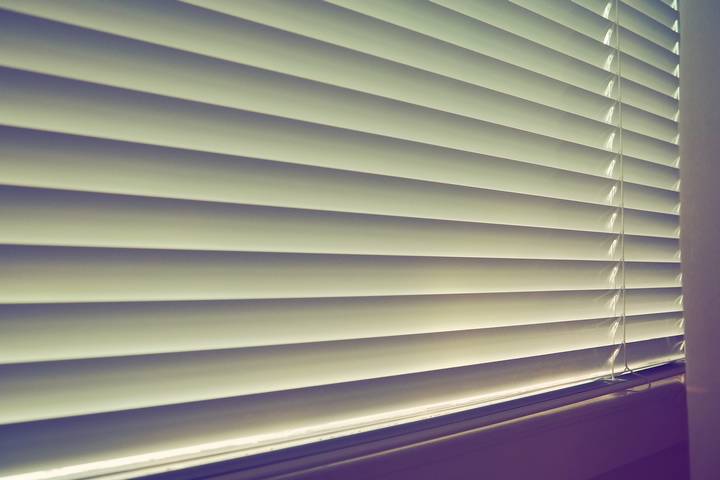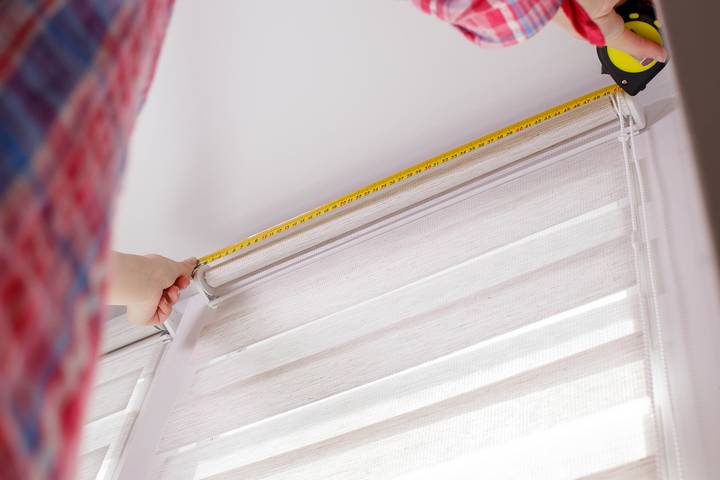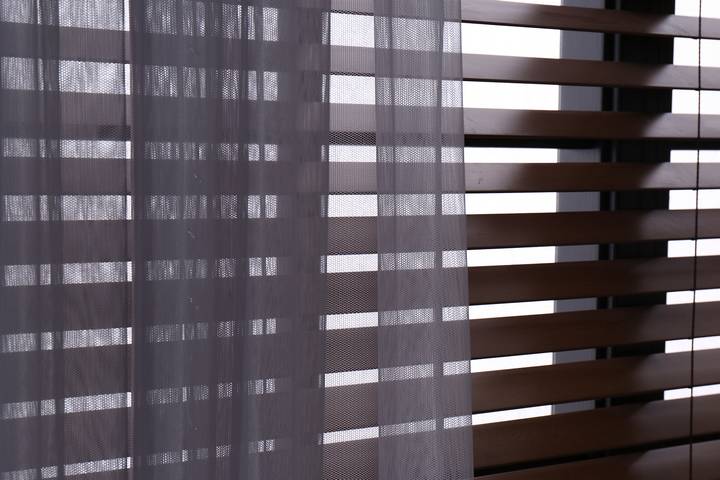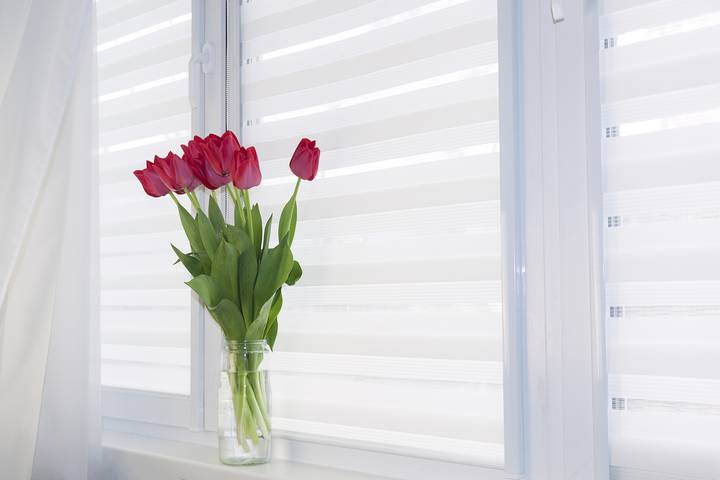How to Use Bedroom Blinds and Curtains Together

Windows in your home allow natural light to shine and fresh air to flow. While it’s great to enjoy the view of the outdoors from the inside, you also need to have privacy with the use of window treatments.
Blinds and curtains are the usual options for dressing up your bedroom windows and giving you privacy, but which one should you choose? The best answer is both!
Why use blinds and curtains if you just need to cover your windows? There are a few reasons, and the first one is to enhance your decor. Blinds are great for partially or fully blocking the sun because they adjust easily and have a streamlined look and profile. Curtains are there to dress the window up more and give additional depth, and while they are effective at covering the window, too, they look amazing when they hang at the sides to frame the window.
The second reason is added blackout capabilities. Blind can rotate, so they are completely blocking the view, but some light still gets in and prevents a total blackout. By adding curtains, you can also draw them closed to completely darken a room. They are a great combo, indeed.
Here is how to use bedroom blinds and curtains together:
1. Start with the Blinds

You should always start your window planning with the blinds because they need to fit the window and room. There are many different styles, so consider what works best and have them installed. Different types that best pair with curtains are:
- Venetian Blinds: These are the ones we all know and love. They run horizontally and are typically made from aluminum. You can get any colour you like, and they work well in areas where there could be moisture because they are waterproof.
- Roller Blinds: Roller blinds are one piece of fabric with a headrail, allowing the blind to roll up and down. They are very sleek and come in cotton, silk or waterproof polyester.
Other blinds include:
- Roman
- Vertical
- Panel
In addition, it’s important to determine the brand. Hunter Douglas blinds are famously known for their quality, versatility, and beautiful style. They complement excellently with your home’s curtains. However, you can also explore blinds from other manufacturers. Prioritize choosing a theme and colour scheme that matches the backdrop for your curtains.
2. Pair the colour and print for your curtains

Your blinds are installed with all their colour, so now you can work on matching them with different shades or prints that you love and work best. A solid coloured blind with a textured print goes well together and balances each other. Pairing a print with a print makes the window treatments too busy and easily overpowers the entire room.
You can also mix things up and go for a more artistic flair with contrasting colours. Then the window will become a focal point in the room.
3. Get the blinds and curtains size right

Installing window treatments allows you to play with the size of the window. Even with a smaller window, the way you put up blinds and curtains can make them seem bigger.
Install blinds above the window or even close to the ceiling to give the effect of a big window. Flank the sides with curtains but mount them wider than the opening. This maximizes the space of your walls to give the illusion of a wider, taller room. The full-length curtain can drape to the floor and add to the effect.
4. Add function to your blinds and curtains

Blackout curtains allow poor sleepers to make their room dark, even during the daytime. This works for night shift workers or watching movies on the big screen in bed. If you don’t want to have the stark look of a blackout treatment the entire time, you can use a blackout blind with sheer curtains.
Now you can open the blinds, draw the curtains for privacy and illumination when you want, and switch them around when you need it dark.
5. Include window accessories

Now that you have the blinds and curtains, you can dress them up for added appeal. Tiebacks work to hold the curtain away from the centre of the window and give you a soft draping effect. You can use a bolder colour for these to accent the palette.
A valance works well for decorating the top of the curtains and blinds by framing along the rod and is usually made of fabric to match or contrast the treatments. It also hides any working mechanisms of the blinds. You can also use a pelmet. This is a more extensive coverage for the top of the window that is made of wood and will cover up the entire curtain rod, making the room look more dramatic. Whatever you choose, these window accessories will add style to your blinds and curtains.
Now you know how to layer up your windows with blinds and curtains. Use these ideas to enhance your bedroom window and then enjoy the look and feel of your personal space.



















